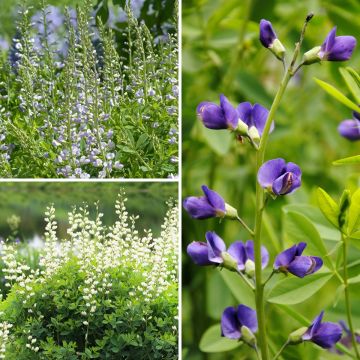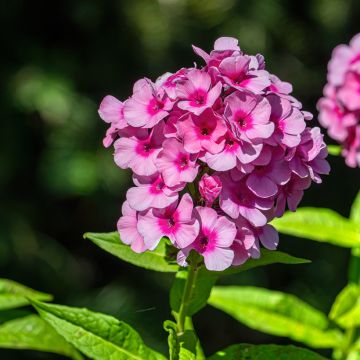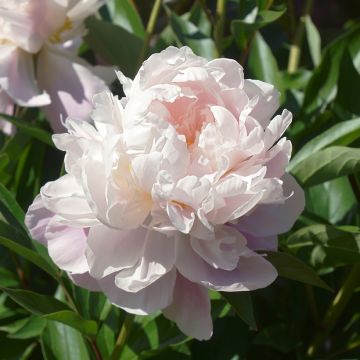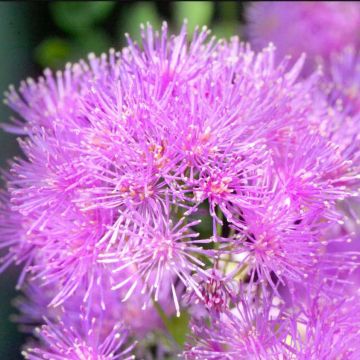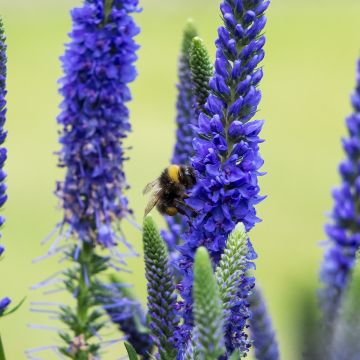Shipping country and language
Your country of residence may be:
Your country of residence is:
For a better user experience on our website, you can select:
Your shipping country:
Andorra
Austria
Belgium
Bulgaria
Canada
Chile
Croatia
Cyprus
Czechia
Denmark
Estonia
Finland
France
Germany
Greece
Hungary
Iceland
Ireland
Italy
Latvia
Lithuania
Luxembourg
Malta
Monaco
Netherlands
Poland
Portugal
Romania
Slovakia
Slovenia
Spain
Sweden
Switzerland
United Kingdom
We only deliver seed and bulb products to your country. If you add other products to your basket, they cannot be shipped.
Language:
French
German
Spanish
English
My Account
Hello
My wish lists
Plantfit
Log in / Register
Existing customer?
New customer?
Create an account to track your orders, access our customer service and, if you wish, make the most of our upcoming offers.


Duo of penstemons with purple foliage
Duo of penstemons with purple foliage
Penstemon digitalis Dark Towers, Husker Red
Foxglove Beardtongue, Smooth White Beardtongue, Talus Slope Penstemon
Order in the next for dispatch today!
Dispatch by letter from €3.90.
Delivery charge from €5.90 Oversize package delivery charge from €6.90.
More information
This item is not available in your country.
Schedule delivery date,
and select date in basket
This plant carries a 12 months recovery warranty
More information
We guarantee the quality of our plants for a full growing cycle, and will replace at our expense any plant that fails to recover under normal climatic and planting conditions.
From €5.90 for pickup delivery and €6.90 for home delivery
Express home delivery from €8.90.
Does this plant fit my garden?
Set up your Plantfit profile →
Collection items (0 plants)
Description
This duo of Penstemon digitalis with purple foliage combines the 'Dark Tower' and 'Husker Red' varieties, undoubtedly the most rewarding for the gardener. These very hardy gentlemen combine dark foliage with a delicate yet generous flowering. Between June and July, they produce dark-coloured floral stems that bear bell-shaped flowers in a delightful range of pink hues. You can plant them in a sunny spot in a romantic, English-style flowerbed or a large flower border.
This duo consists of:
- 1x Penstemon digitalis 'Husker Red': a variety that reaches 60 to 70 cm in height, with leaves coloured brownish-purple that turn slightly green in summer. The floral stems are also brownish-purple, with tubular flowers in a pinkish-white colour.
- 1x Penstemon digitalis 'Dark Towers': a taller variety, reaching 80 cm in height when in bloom. Its foliage is darker than 'Husker Red' and remains more colourful in summer. The floral stems are burgundy and adorned with pale pink flowers with a dark pink base.
Plant this duo of penstemons in a sunny spot in the garden, either in a flowerbed or a large flower border. These perennials tolerate cold winters very well if planted in light, well-drained soil that does not retain too much water in winter. A mixture of compost, garden soil, and coarse sand will suit them. A slightly raised flowerbed is ideal. Leave a spacing of 40 cm between each plant (5 plants per m²). The penstemons in this duo require reasonably rich soil and a little water in summer to flower abundantly.
There are plenty of ideas for creating a large flowerbed, according to each gardener's taste. You can mix these penstemons with tall blue bellflowers, 'Flamingo' Gypsophila (pink), Lychnis 'Angel's Blush', and greater sea kale (Crambe cordifolia) in a large, English-style flowerbed that blooms for months. They also make excellent companions for pink or white roses. Once well-established, this solid and hardy duo only requires pruning the stems to 10 cm above the ground in March-April.
Flowering
Foliage
Plant habit
Botanical data
Penstemon
digitalis
Dark Towers, Husker Red
Scrophulariaceae
Foxglove Beardtongue, Smooth White Beardtongue, Talus Slope Penstemon
Cultivar or hybrid
Other Perennial collections
Planting and care
Plant these plants in sunny, well-prepared, light, rich, well-draining soil in early spring or early autumn.
Penstemon digitalis thrives in light, rich, well-drained soil that is not too wet in winter but does not dry out too much in summer. It tolerates a little limestone, and slightly acidic soil is also suitable. These plants are easy to grow and only require a little care due to their relative intolerance of winter humidity. They are truly hardy, tolerating temperatures down to around -30°C. Do not prune the clump at the end of the season, as its semi-evergreen foliage regulates soil moisture. It is possible to mulch the base at the start of winter with a dry bed of dead leaves, crushed sand, and gravel to improve drainage and prevent crown rot caused by excess moisture. Light fertilisation at planting is beneficial, but it should be avoided afterwards, as this could result in Penstemon having overly spindly, loose stems. Although fairly disease-resistant, Penstemon can be prone to powdery mildew and attacked by snails, slugs and chrysanthemum nematodes.
Planting period
Intended location
Care
This item has not been reviewed yet - be the first to leave a review about it.
Cottage garden perennials
Haven't found what you were looking for?
Hardiness is the lowest winter temperature a plant can endure without suffering serious damage or even dying. However, hardiness is affected by location (a sheltered area, such as a patio), protection (winter cover) and soil type (hardiness is improved by well-drained soil).

Photo Sharing Terms & Conditions
In order to encourage gardeners to interact and share their experiences, Promesse de fleurs offers various media enabling content to be uploaded onto its Site - in particular via the ‘Photo sharing’ module.
The User agrees to refrain from:
- Posting any content that is illegal, prejudicial, insulting, racist, inciteful to hatred, revisionist, contrary to public decency, that infringes on privacy or on the privacy rights of third parties, in particular the publicity rights of persons and goods, intellectual property rights, or the right to privacy.
- Submitting content on behalf of a third party;
- Impersonate the identity of a third party and/or publish any personal information about a third party;
In general, the User undertakes to refrain from any unethical behaviour.
All Content (in particular text, comments, files, images, photos, videos, creative works, etc.), which may be subject to property or intellectual property rights, image or other private rights, shall remain the property of the User, subject to the limited rights granted by the terms of the licence granted by Promesse de fleurs as stated below. Users are at liberty to publish or not to publish such Content on the Site, notably via the ‘Photo Sharing’ facility, and accept that this Content shall be made public and freely accessible, notably on the Internet.
Users further acknowledge, undertake to have ,and guarantee that they hold all necessary rights and permissions to publish such material on the Site, in particular with regard to the legislation in force pertaining to any privacy, property, intellectual property, image, or contractual rights, or rights of any other nature. By publishing such Content on the Site, Users acknowledge accepting full liability as publishers of the Content within the meaning of the law, and grant Promesse de fleurs, free of charge, an inclusive, worldwide licence for the said Content for the entire duration of its publication, including all reproduction, representation, up/downloading, displaying, performing, transmission, and storage rights.
Users also grant permission for their name to be linked to the Content and accept that this link may not always be made available.
By engaging in posting material, Users consent to their Content becoming automatically accessible on the Internet, in particular on other sites and/or blogs and/or web pages of the Promesse de fleurs site, including in particular social pages and the Promesse de fleurs catalogue.
Users may secure the removal of entrusted content free of charge by issuing a simple request via our contact form.
The flowering period indicated on our website applies to countries and regions located in USDA zone 8 (France, the United Kingdom, Ireland, the Netherlands, etc.)
It will vary according to where you live:
- In zones 9 to 10 (Italy, Spain, Greece, etc.), flowering will occur about 2 to 4 weeks earlier.
- In zones 6 to 7 (Germany, Poland, Slovenia, and lower mountainous regions), flowering will be delayed by 2 to 3 weeks.
- In zone 5 (Central Europe, Scandinavia), blooming will be delayed by 3 to 5 weeks.
In temperate climates, pruning of spring-flowering shrubs (forsythia, spireas, etc.) should be done just after flowering.
Pruning of summer-flowering shrubs (Indian Lilac, Perovskia, etc.) can be done in winter or spring.
In cold regions as well as with frost-sensitive plants, avoid pruning too early when severe frosts may still occur.
The planting period indicated on our website applies to countries and regions located in USDA zone 8 (France, United Kingdom, Ireland, Netherlands).
It will vary according to where you live:
- In Mediterranean zones (Marseille, Madrid, Milan, etc.), autumn and winter are the best planting periods.
- In continental zones (Strasbourg, Munich, Vienna, etc.), delay planting by 2 to 3 weeks in spring and bring it forward by 2 to 4 weeks in autumn.
- In mountainous regions (the Alps, Pyrenees, Carpathians, etc.), it is best to plant in late spring (May-June) or late summer (August-September).
The harvesting period indicated on our website applies to countries and regions in USDA zone 8 (France, England, Ireland, the Netherlands).
In colder areas (Scandinavia, Poland, Austria...) fruit and vegetable harvests are likely to be delayed by 3-4 weeks.
In warmer areas (Italy, Spain, Greece, etc.), harvesting will probably take place earlier, depending on weather conditions.
The sowing periods indicated on our website apply to countries and regions within USDA Zone 8 (France, UK, Ireland, Netherlands).
In colder areas (Scandinavia, Poland, Austria...), delay any outdoor sowing by 3-4 weeks, or sow under glass.
In warmer climes (Italy, Spain, Greece, etc.), bring outdoor sowing forward by a few weeks.




